
views
Prepping the Door for Stain
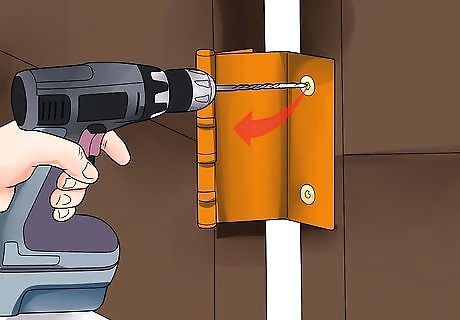
Remove the door from the hinges. It's important to remove the door and lay it out flat to stain it properly. Most wood doors should be able to be removed fairly easily, without fear of damaging. Don't try to stain doors while they're hanging on the hinges. To remove the door, pull the pins that hold the hinges together using a screwdriver. Push the pins up until they release the hinge plate on the door, then remove it.

Remove the hardware. To avoid staining the door knobs, knockers, locks, and other hardware, it's important to unscrew everything that's connected to the door and remove it so you can stain the wood and only the wood. Most hardware can be removed by unscrewing a couple of Philips-head screws and should come off quite easily. Keep everything organized so you'll be able to find it later, after the door has been stained.
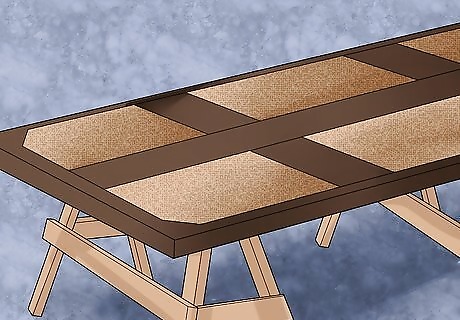
Lay the door out flat on some sawhorses. It's usually best to set up a sawhorse in a well-ventilated area before you stain it, as flat as possible and preferably at waist-height. Setting a door up on a workbench would be fine, but setting it up on some sawhorses would be even more perfect, if you have access to them.
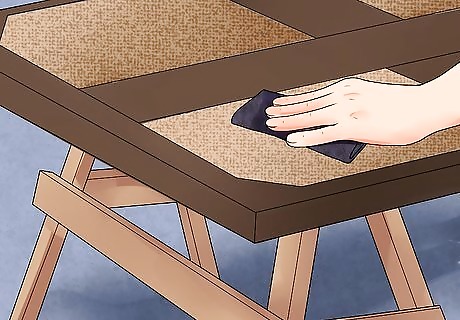
Sand the door thoroughly. If the door is painted or has been stained previously, it's important to sand it thoroughly before you try to stain it. Even if the door hasn't previously been painted, treated, or sanded, it's also good to sand it down to open up the fibers and help it accept the stain more easily. Use an orbital finish sander or sanding pad with 220-grit sandpaper to sand the door quickly and remove minor imperfections. Always sand with the grain of the wood. Sometimes it's also common to wipe the door down with tack cloth before applying the stain. Tack cloth is a sticky piece of cheesecloth-like gauze that is yellow in color, helping to remove sawdust and other sediment to clean the surface. Wipe down your project with this and choose an area to stain that is dust free as possible.
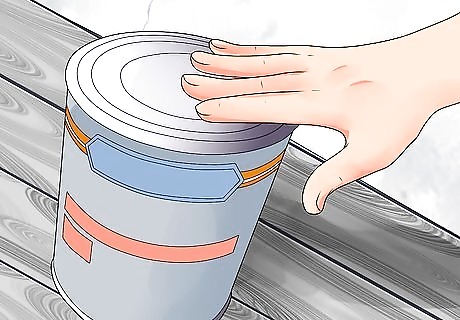
Select a door stain appropriate for the wood. Always use a good quality stain with a petroleum base, such as Minwax, Craftsman, mixing the stain according to the manufacturer's directions. Some people think a gel stain is appropriate for smaller areas, while others prefer poly stains for their versatility. Go to the hardware outlet of your choice and shop around for a color and variety of wood stain that matches the type of wood and the kind of look you're going for with the door.
Staining the Door

Wear protective eyewear and gloves. When you're handling stain and sanding, it's important to wear protective clothing, gloves, eyewear, and respiration if you're indoors. Avoid getting wood stain in your face or on your skin. If you're staining in your garage, it's also critical to wear breathing protection and to ventilate the area as much as possible. Take frequent breaks and make sure you're getting enough clean air into your lungs. Stop immediately if you start to feel light-headed.
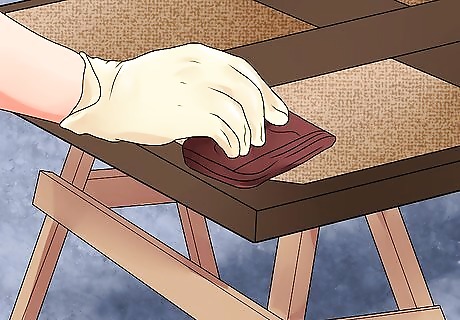
Apply a coat on stain. Paint the stain onto the wood with the grain, using a lint-free cloth folded into a pad. Paint evenly, with the door laid flat so the stain won't drip down the wood grain and stain at awkward intervals. After the first light pressure wipes, without adding more stain from the can, apply even pressure and wipe three to eight times with the grain. Always go with the grain of wood, and in a singular motion without stopping. Some wood workers like to apply the initial coat with a brush, then go over the stain while it's still wet with a rag to smooth out the stain and create a more even look. If you're using a poly stain or a gel stain, it's sometimes recommended to use a brush, as opposed to a lint-free cloth. Always defer to the manufacturer's directions and use the appropriate tool and technique for the stain you're using.
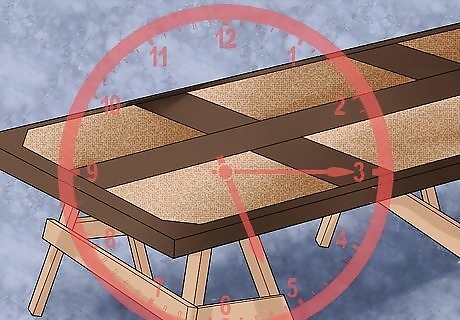
Let the stain set for a recommended time and wipe off with a dry lint-free cloth. Depending on your project, the wood you're staining, and the variety of stain you're using, you may be ready to finish the stain, or you'll likely want to apply a second, and possibly more coats. If so, it's important to let the stain dry, sand over it with 0000 steel wool or 220 sandpaper, and repeat the staining process. Use a clean lint-free cloth to wipe off excess stain as you're painting it on, to avoid uneven pools of stain that will form dark spots. As stain dries, a kind of "peach fuzz" will form as a result of stain, which you should work off with the steel wool, moving in gentle but even circles with the grain of the wood. Typically, you want to allow six to ten hours of drying time between coats.
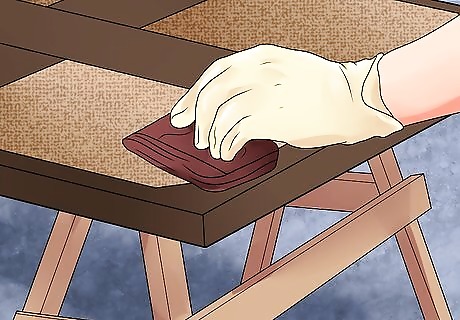
Apply as many coats as necessary. Now, if desired, you may dip your application cloth back into the can of stain, and repeat the process until the desired color is achieved. Continue staining the wood, rubbing down the wood between coats with 0000 steel wool, until you've gotten the stain to the color you like it. Once you are happy with the look of the wood, leave it alone and stop touching it until it's thoroughly dry. Don't use steel wool or sandpaper or anything. Let it dry for several hours, then clean it up with a clean lint-free cloth.
Finishing the Door
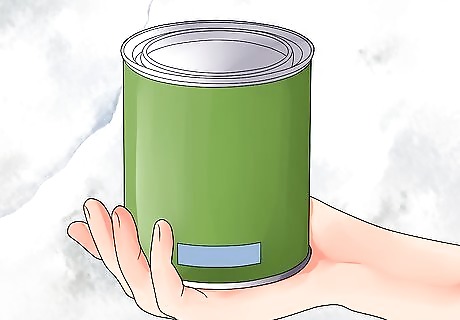
Choose an appropriate urethane finish for the door. Stain colors the wood, but you also need to protect your hard work by applying an exterior urethane finish on the surface of the stain to seal and protect it. Finish comes in flat, semi-gloss or high gloss, and will need to be applied in several coats. Always follow the manufacturer's recommended directions. Water-based finishes are somewhat more environmentally friendly, but can also result in that "peach fuzz" texture that the stain creates as well. Apply the finish using a similar application and buffing process, using the steel wool or sandpaper between coats. Wipe down the surface with a wet rag. Allow the wood to dry thoroughly before applying finish, sanding it lightly if necessary before you begin.

Use a bristle or foam brush to apply finish. Follow the same basic procedure and pattern for applying the finish, using long even strokes and a uniform coat with the brush. Use a cloth to wipe off and smooth out excess finish if necessary. Read the manufacturer's instructions to find out how long to wait between coats, usually somewhere between two and six hours.

Sand off any bristles that appear after the first finish coat. Apply at least two more coats for a thorough, even finish over the first coat, which will be more heavily sanded than usual for a finish coat. By the time you get to the last coat, you shouldn't be sanding at all. When you've applied all the coats of finish, let the door dry thoroughly and wipe it down with a clean cloth to make sure it's completely dust free and clean before hanging it back in place.

Reattach all hardware. If you removed the hardware from the door, reattach it as before and get your door ready to hang back up in the frame. Have a partner help to hold it in place while you screw the fixtures back in and reinsert the hinge pin into place to complete the job.
















Comments
0 comment